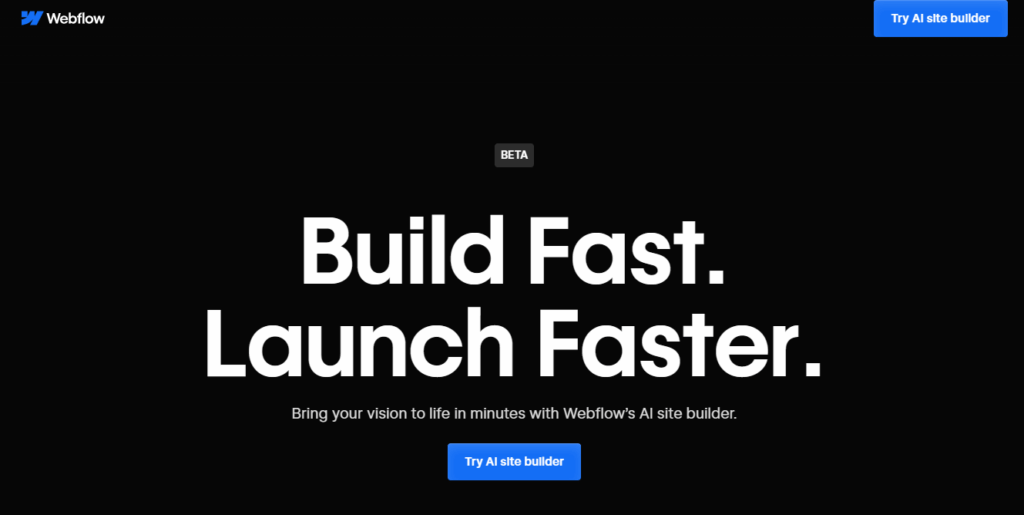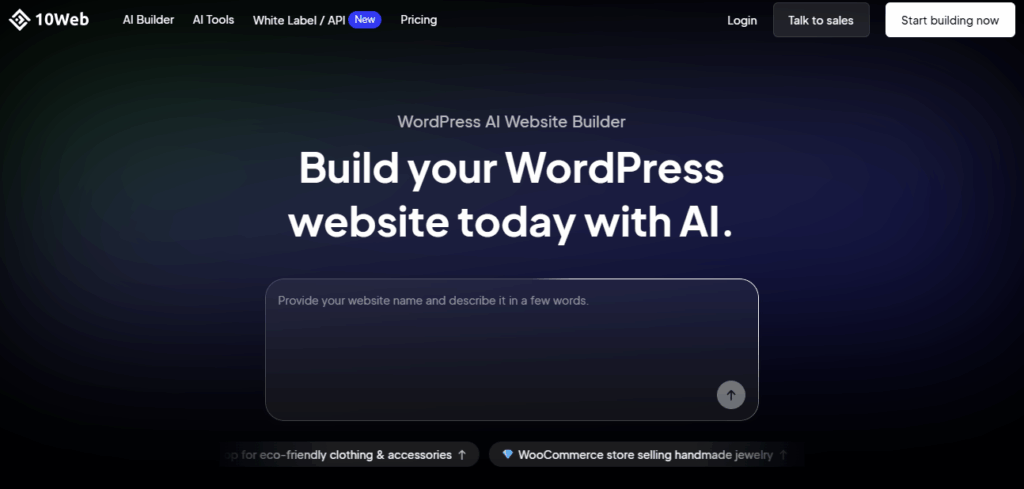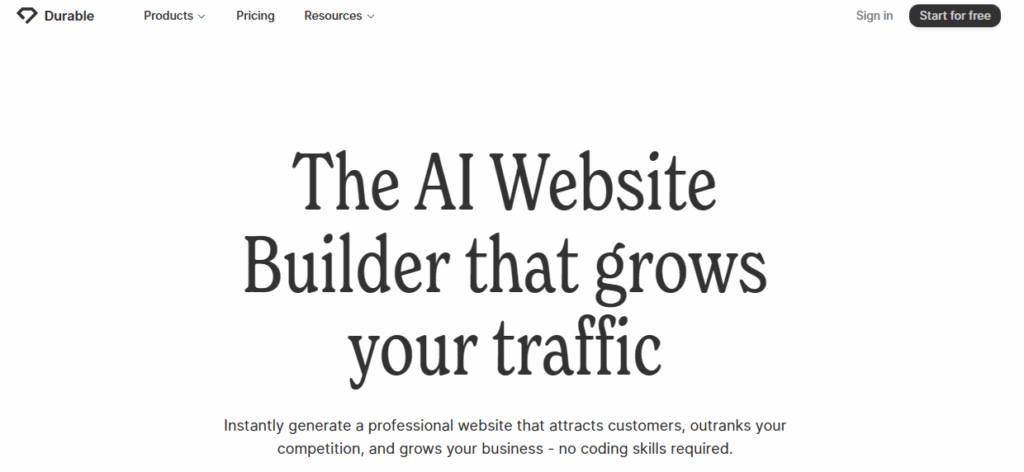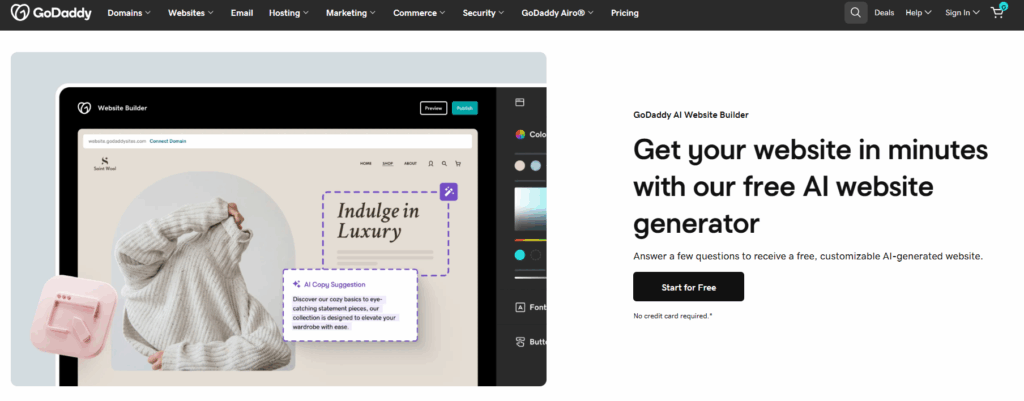AI website builders promise a lot: “Describe your business in a sentence and we’ll generate a beautiful, high-converting site in 30 seconds.”
Sometimes you actually get something usable. A lot of the time, you get a generic template with lorem ipsum swapped out for slightly better lorem ipsum.
If you’re trying to decide whether to trust an AI builder in 2025, the real question is:
Which tools can consistently ship a decent site—one you’re not embarrassed to send to customers—without trapping you later?
Let’s break that down.
Quick answer: the AI builders that are actually worth a look
Based on how these platforms work today (and how they’ve been evolving), here are the AI builders that are most likely to ship a decent, long-term site—not just a shiny demo:
- Hostinger AI Website Builder – Best overall for small businesses that want a fast, simple, all-in-one setup.
- Wix (ADI + newer AI tools) – Best mix of AI speed and “I still want design control” for most non-developers.
- Framer AI – Best for startups, portfolios, and landing pages where modern design matters more than deep CMS.
- Webflow + AI features – Best for pros who want AI to speed up production inside a powerful visual builder.
- 10Web AI Builder (WordPress-based) – Best if you love WordPress but hate starting from scratch.
- Durable – Best for one-page local businesses that just need something live today.
- GoDaddy AI helpers – Best for very simple brochure sites if you’re already in those ecosystems.
Everything else is either:
- too limited,
- too generic,
- or too risky to rely on as your main business site.
Now let’s talk about what “decent” actually means—and when these tools work vs. when they fall apart.
What we actually mean by “a decent site” in 2025
For our purposes, a “decent” AI-built site is one that:
- Loads fast and works on mobile
- Looks on-brand enough that a real human isn’t embarrassed by it
- Has clear navigation and structure for both users and search engines
- Doesn’t block you from improving it later (design, SEO, content, integrations)
- Doesn’t create a nightmare if you decide to move platforms later
It’s not about pixel-perfect design or some award. It’s:
“Would I be okay sending this to a potential customer, and can I grow on top of it?”
With that bar in mind, here’s how the better AI builders stack up.
Hostinger AI Website Builder – Best overall “get online fast” option

If you want a fast way to get a legit small business site live—and you don’t care about bleeding-edge design systems—Hostinger’s AI Website Builder is one of the more balanced choices.
What the AI actually does
- Asks you a few questions about your business type, name, and goals
- Generates a multi-section site with navigation, copy, images, and basic structure
- Gives you a visual editor to tweak text, images, and layout
- Bundles hosting, SSL, and domain management under one roof
Where it’s strong
- Speed: you can go from zero to a working, mobile-friendly site in under an hour if you’re decisive.
- Sane defaults: fonts, spacing, and layout are usually good enough for most small businesses.
- All-in-one: you don’t have to juggle a separate host, DNS, and CMS.
Where it breaks
- If you’re picky about design and branding, you’ll quickly run into “this is fine, but not us.”
- Advanced SEO or content structures (complex blogs, multiple content types) can feel cramped.
Who it’s actually for
- Solo founders, local businesses, simple service companies
- People who’d otherwise default to “a friend makes me a site on WordPress and disappears”
If you want a respectable first site that doesn’t require technical skills, this is one of the safer AI options.
Wix (ADI + newer AI tools) – Best blend of AI and creative control

Wix has been playing with AI-assisted site creation for years (ADI), and they’ve been layering on more generative tools for layouts and content. The net result is a hybrid: AI gets you started, then the editor let you customize almost everything.
What the AI actually does
- Generates a full site based on your industry and content hints
- Suggests layouts, sections, and copy blocks
- Lets you refine design, colors, and structure in their drag-and-drop editor
Where it’s strong
- Design flexibility: you’re not locked into whatever the AI spits out. You can move sections, add pages, and restyle elements.
- Feature ecosystem: bookings, blogs, ecommerce, memberships—all inside one platform.
- Template + AI combo: you can use AI to accelerate setup and borrow from proven templates.
Where it breaks
- It’s easy to create something visually busy or inconsistent if you go wild with drag-and-drop.
- Performance and cleanliness can lag behind more minimal builders if you overload the page.
Who it’s actually for
- Non-technical people who care about aesthetics
- Small businesses that might grow into more complex sites but don’t want the overhead of WordPress or Webflow yet
If you’re willing to spend a bit more time editing, Wix is a good “AI plus real control” middle ground.
Framer AI – Best for beautiful landing pages and portfolios

Framer built a name as a modern design tool; then they added AI that can generate fully realized landing pages from a prompt.
Out of all the AI builders, Framer tends to produce some of the most polished, on-trend layouts for startups, SaaS, and creative portfolios.
What the AI actually does
- Takes a prompt like “Landing page for a SaaS that helps dentists manage bookings”
- Generates a complete landing page: hero section, features, pricing, FAQs, images, and layout
- Lets you edit everything in a visual canvas that still feels like a design tool, not a toy
Where it’s strong
- Design quality: typography, spacing, and overall layout look closer to what you’d get from a competent designer.
- Speed for experiments: great for quickly spinning up variations of landing pages to test offers.
- Built-in animations and interactions that feel modern without extra code.
Where it breaks
- It’s not a full CMS in the way WordPress or Webflow is; deep content sites are less natural here.
- If you need heavy integrations, dynamic content, or custom flows, you may outgrow it.
Who it’s actually for
- Startups and SaaS companies that need sharp marketing pages
- Designers and founders who want a nice portfolio or “link in bio” style site that doesn’t look like a template
If your homepage and a handful of landing pages are your site, Framer AI is one of the best AI options.
Webflow + AI – Best for pros who want AI as a helper, not a crutch

Webflow is already a serious visual builder with a proper CMS. Their AI tools are more about speeding up content and layout creation inside that environment instead of “click one button, get a whole site.”
What the AI actually does
- Helps generate or revise copy in context
- Assists with layout suggestions and component variations
- Speeds up repetitive tasks like writing similar section copy or microcopy
Where it’s strong
- Professional-grade control: you get clean HTML/CSS under the hood.
- CMS power: great for blogs, multi-page sites, directories, and content-heavy projects.
- Design systems: you can treat AI as a junior assistant inside a system you control.
Where it breaks
- There’s a learning curve. If you’re brand-new to building websites, Webflow can feel overwhelming.
- AI won’t magically remove the need to understand layout, responsive design, and basic structure.
Who it’s actually for
- Marketers and designers who already use Webflow or plan to learn it
- Agencies that want AI to accelerate production, not replace process
If you’re investing in Webflow anyway, the AI features can help you move faster without sacrificing quality.
10Web AI Builder – Best if you want WordPress under the hood

10Web’s AI builder is WordPress-based. That means:
- You ultimately end up with a WordPress site
- You can keep expanding your site with plugins, themes, and customizations
What the AI actually does
- Generates a site based on your business type and content
- Can help “rebuild” an existing site into a WordPress/10Web version
- Uses AI to structure pages, layouts, and copy to get you started
Where it’s strong
- Future flexibility: you’re on WordPress, so you’re not locked into a proprietary builder forever.
- Familiar ecosystem: huge plugin/theme ecosystem if you need more features later.
- Migration potential: easier to outgrow the AI part without throwing everything away.
Where it breaks
- If you’re totally new to websites, WordPress can still be intimidating.
- You may end up with a site that technically works but still needs a designer’s touch to feel really polished.
Who it’s actually for
- People who know they eventually want WordPress but want AI to skip the “blank theme” pain
- Agencies that want a faster starting point for basic client sites
If you’re allergic to the idea of being stuck on a closed platform, 10Web is one of the more pragmatic AI options.
Durable – Best “I just need something live today” option

Durable is an AI-driven builder aimed squarely at small local businesses and solo operators.
What the AI actually does
- Asks a few simple questions
- Spits out a one-page site with sections, images, copy, and contact info
- Adds simple features like contact forms and basic lead capture
Where it’s strong
- Ridiculous speed: you can literally have something live in minutes.
- Simplicity: you don’t have to think about site architecture at all.
- Better than nothing: if you’re choosing between “no site” and “Durable site,” Durable wins.
Where it breaks
- Limited depth for content and SEO; not ideal for serious blogging or complex services.
- You’ll probably want to upgrade or move to something more robust if your business grows.
Who it’s actually for
- Local and micro-businesses that need a basic online presence ASAP
- People testing an idea who aren’t ready to invest in a full build
Think of Durable as a decent MVP, not your forever home.
GoDaddy AI helpers – Fine for simple brochure sites

Several traditional builders like GoDaddy are layering AI on top of their existing systems.
What the AI actually does
- Suggests layouts and sections
- Drafts basic copy based on your industry and goals
- Speeds up initial page creation
Where they’re strong
- Low friction: good onboarding flows, simple interfaces.
- Ecosystem: if you already use them for domains or email, everything’s under one login.
- Brochure sites: ideal if you’ll never need more than a small set of pages and a contact form.
Where they break
- Not ideal for heavy blogging or complex SEO strategies.
- Design flexibility and performance lag behind more modern builders in some cases.
Who they’re actually for
- Business owners who already live in GoDaddy and want to spin up a basic site
- People who care more about “done” than “perfect” and don’t plan to scale content heavily
When AI website builders make sense (and when they don’t)
Use an AI builder when…
- You’re starting from zero and time matters more than perfection.
You need something live, you don’t want to wrangle hosting, and you’re okay with “good enough” design. - Your business is simple.
A straightforward service, one location, a clear offer, and a handful of core pages. - You don’t have technical talent on the team yet.
An AI builder is often better than paying for a half-baked custom site you can’t update.
Avoid relying on AI builders when…
- Content is the core of your business.
If you’re planning a large blog, knowledge base, or content-heavy SEO play, you’ll be more comfortable on WordPress, Webflow, or a similar CMS where you control everything. - You need deep integrations and custom flows.
Complex funnels, membership systems, or highly specific product flows will outgrow most AI builders quickly. - Brand and UX are your main differentiators.
If you’re trying to look and feel truly unique, you’ll still want a real designer and a more flexible platform.
How to get a better site out of any AI builder
Regardless of which tool you choose, you’ll get much better results if you don’t just “type one sentence and hope for magic.”
Use this process instead:
1. Prepare your inputs like a mini brief
Before you open the builder, clarify:
- What your business actually does
- Who your primary customer is
- The main action you want visitors to take (call, book, buy, join, subscribe)
- 3–5 competitors whose sites you like or dislike
Then feed that into the builder in as much detail as it allows.
2. Rewrite the AI’s copy instead of accepting it
AI-generated copy is almost always:
- Too generic
- Too vague
- Too similar to everyone else in your niche
Use it as a starting point, then rewrite:
- Headlines to sound like you
- Benefit bullets to reflect real outcomes
- CTAs to be specific about what happens next
3. Make the structure human-friendly and AI-friendly
For SEO and AI discovery, you want:
- Clear page titles and headings (no clever but confusing section names)
- A logical navigation structure (Home, Services, About, Contact, Blog)
- A simple URL structure and consistent internal links
Even if you’re using an AI builder, you can usually rename pages, adjust headings, and improve internal navigation.
4. Add a plan for content beyond the homepage
A decent site is more than a single landing page. Even on an AI builder, you should have:
- A clear “About” page with your story and credibility
- A Services / Product page with real details and pricing or clear next steps
- A Contact page that actually works and sets expectations
- A plan for at least a small blog or resources area if SEO matters to you
5. Run basic checks before you call it done
At minimum:
- Test on your phone and one other device
- Click every link and button
- Fill out your own forms
- Run a quick speed and SEO check with any free tool the builder provides (most have them now)
If the site passes these basic tests, it’s “decent” enough to ship and improve later.
AI website builders in 2025: realistic expectations
AI website builders are getting better, but they’re not a magic replacement for:
- Real positioning
- Good offers
- Honest, specific copy
- Intentional design decisions
What they can do is:
- Get you a respectable starting point in a fraction of the time
- Help non-technical founders and small businesses stop procrastinating on their site
- Give designers and marketers a faster way to prototype and iterate
If you:
- Pick one of the stronger builders,
- Treat the AI output as a first draft,
- And commit to improving the site over time,
you’ll end up with something far more valuable than the usual half-finished WordPress install or “coming soon” page that never ships.
Use AI to get you out of the blank-page stage. Use your own judgment to make sure the site is something you’re proud to send to customers.
